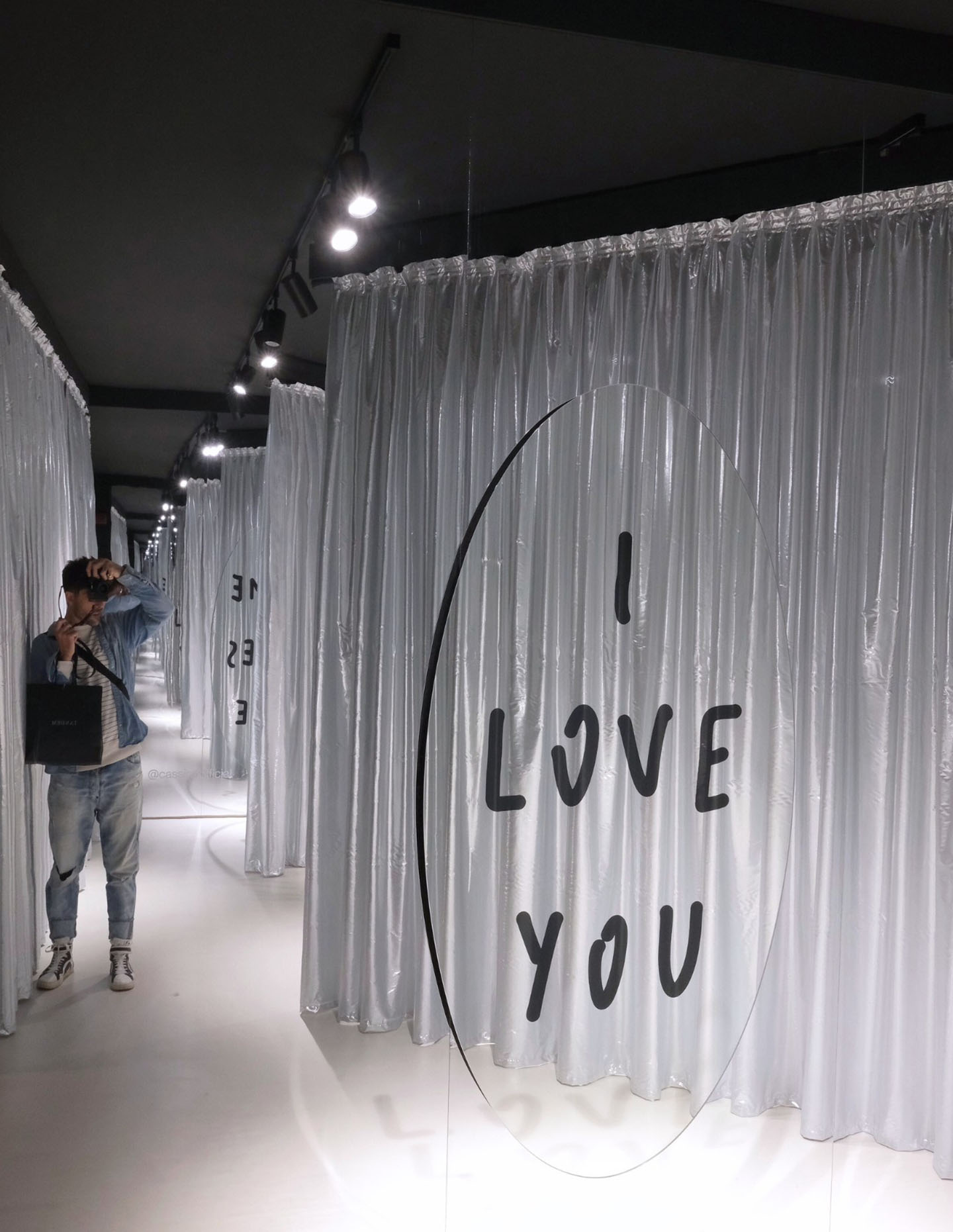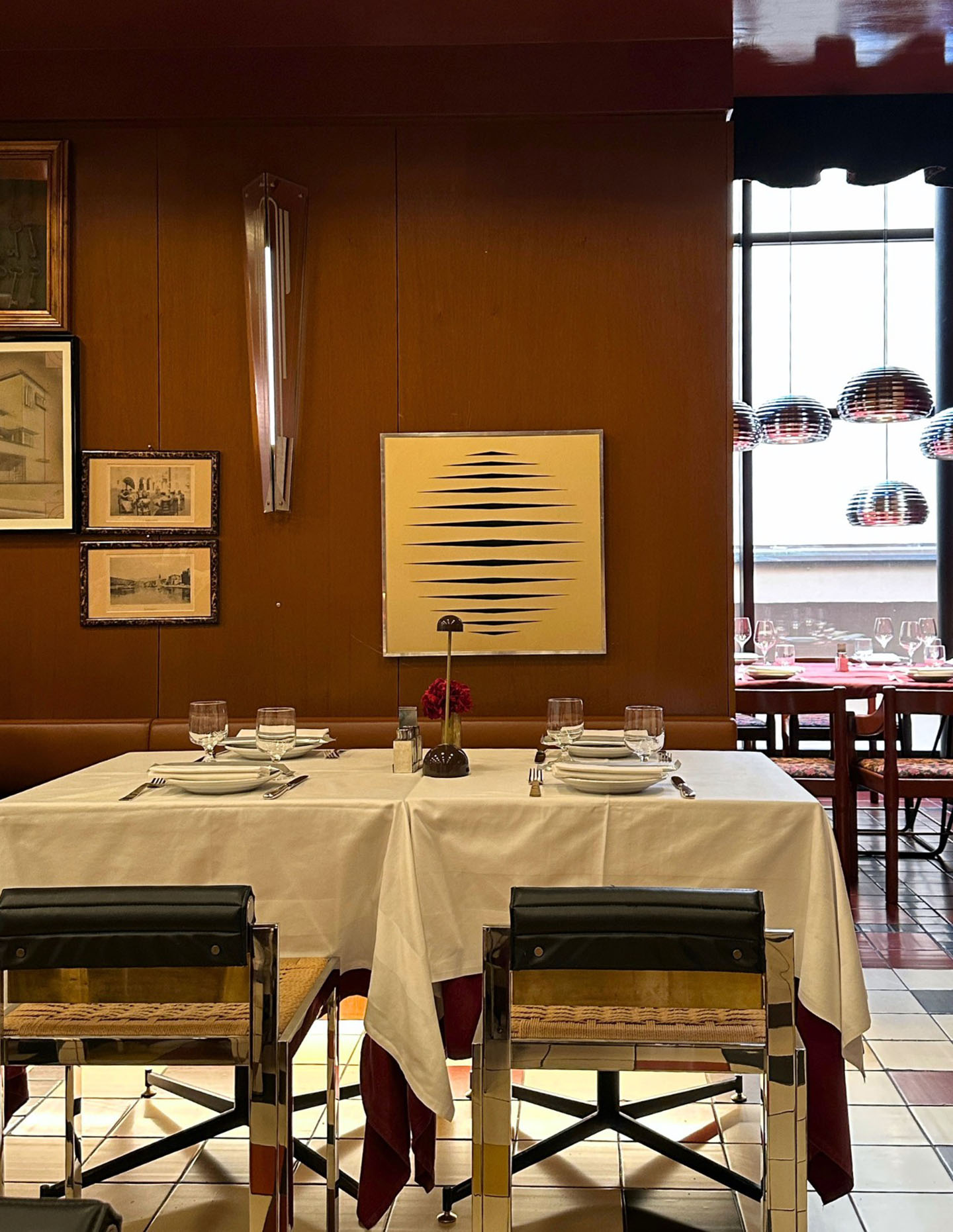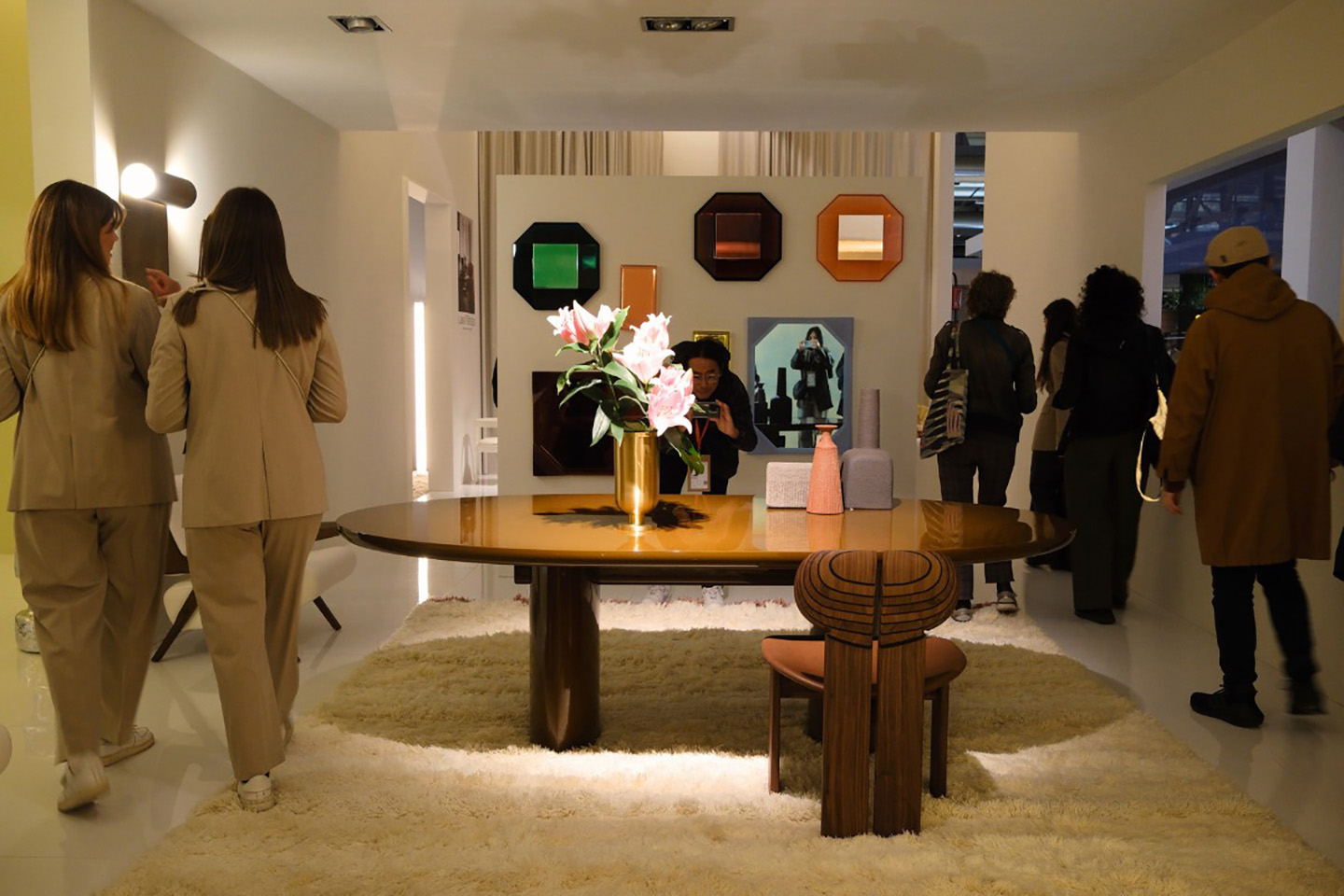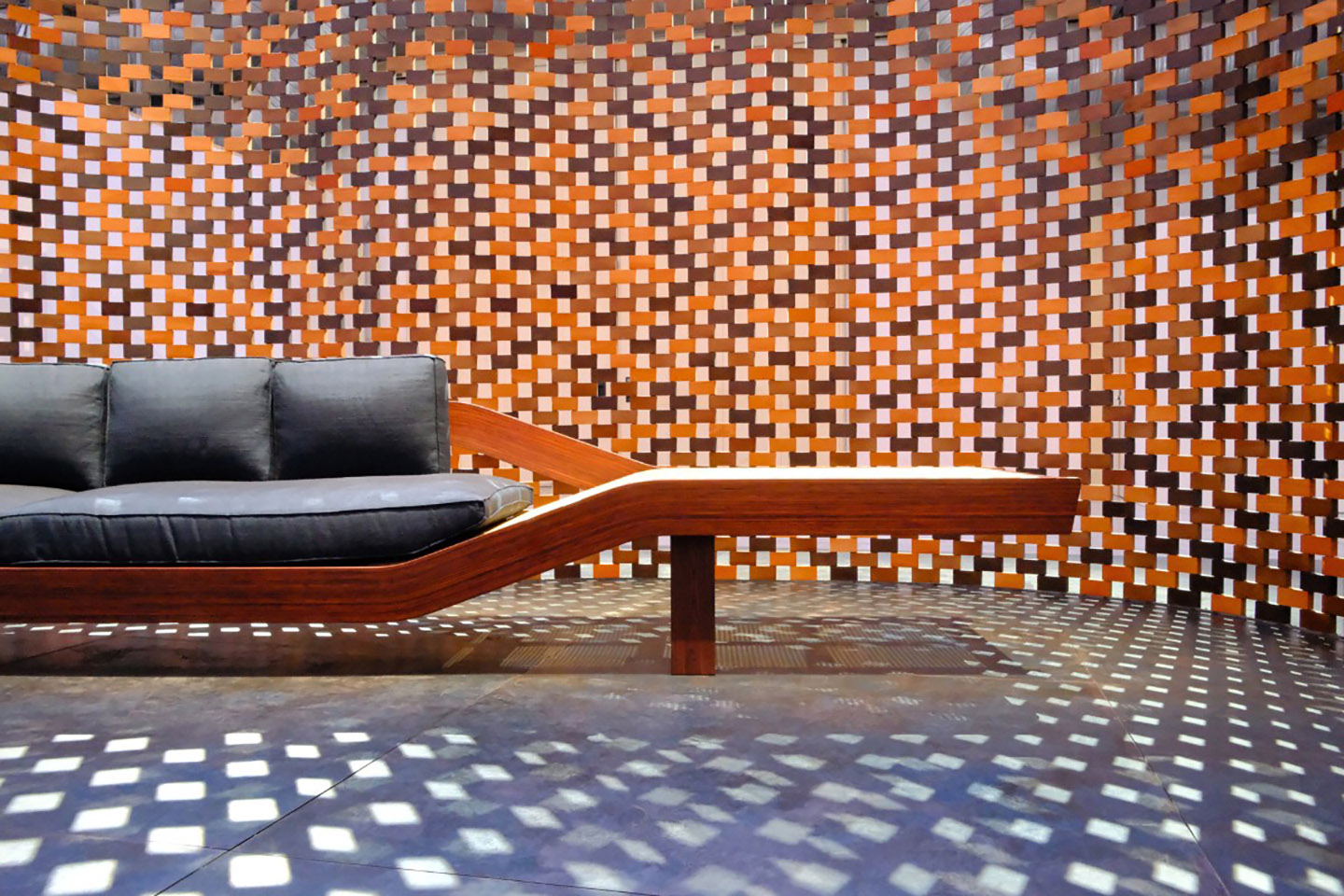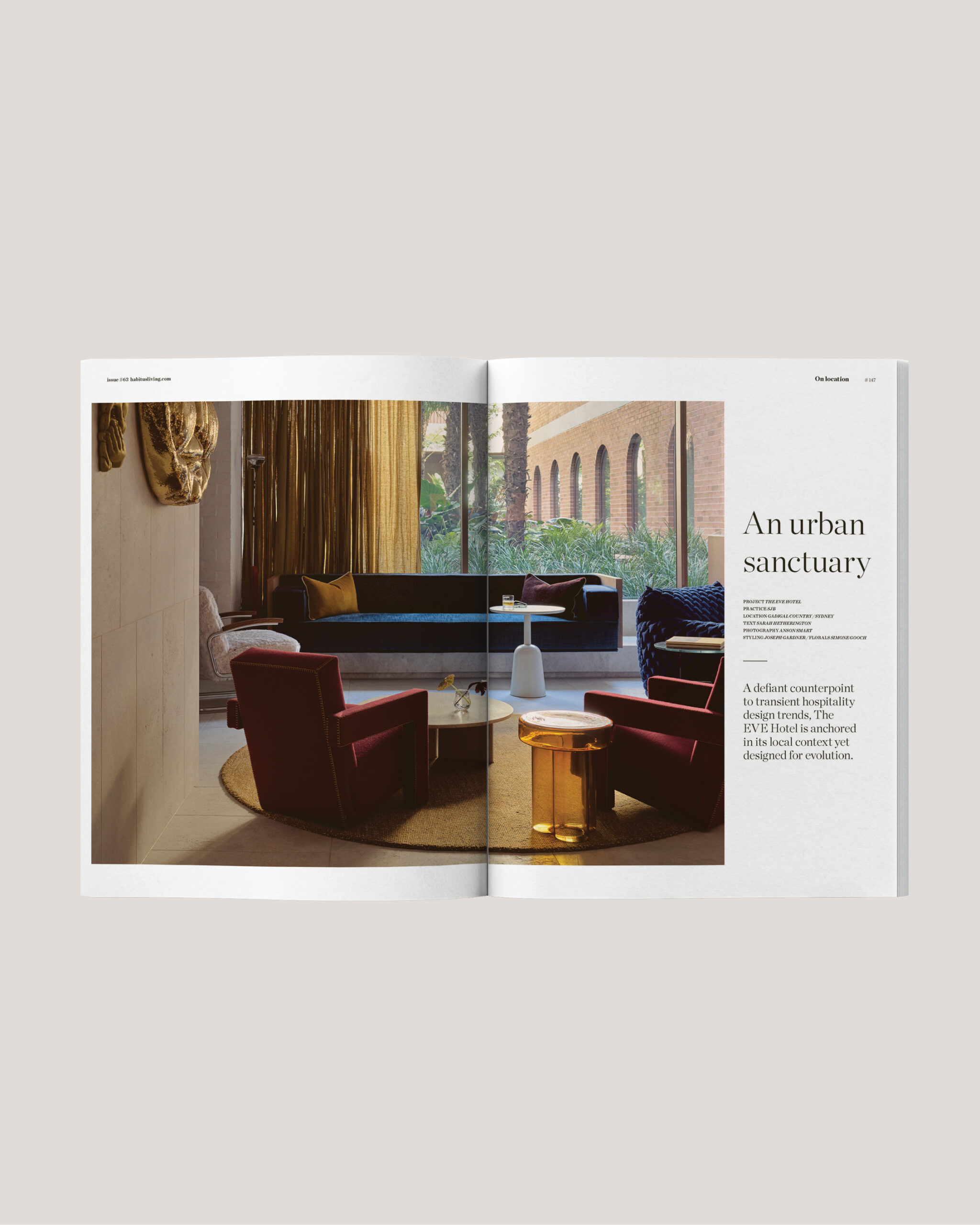Returning to Milan this year, everything felt both familiar and quietly transformed. The energy of Design Week was unmistakable – intense, layered alive – but I moved through it differently. Staying in a residential pocket away from the fair’s centre, I found myself less drawn to the major moments and more attuned to the in-between: mornings in local cafés, soft light falling through garden courtyards, the quiet elegance of Milanese life. These became the true rhythm of the week and the lens through which I experienced design.
Salone del Mobile delivered its spectacle: scale, polish, technical achievement. But the encounters that stayed with me happened elsewhere. Climbing stairwells to off-site shows. Pausing at the edge of a piazza between appointments. Observing how people actually move through space. While Salone impressed with its vision and production, the city offered contrast- intimacy, experimentation and a feeling of craft.

Furniture followed this tone. Oversized, grounded, generous, it invited rest. Sofas and chairs felt like soft retreats, designed to welcome you in and ask you to stay a while. Curved edges, broad silhouettes, and deep cushions gave the work a sense of calm assurance. Furniture wasn’t trying to be clever, it was trying to hold you.
That same attitude was mirrored in what people wore. Slouchy trousers, oversized shirts and soft tailoring dominated the streets. Fashion wasn’t sharp this year, it was expressive and enveloping. Comfort became a kind of confidence.
Furniture always follows fashion, and this year’s streets gave a powerful insight into what’s coming next.

A 1970s warmth returned – earthy, tonal and textural. Colours moved from soft beige to burnt brown, punctuated by cobalt blue. There was a clear revival of retro palettes, made current through contrast and material play. Shaggy rugs beneath polished steel, glossy wall fabrics beside raw timber – it was a tactile playground. A new kind of quiet luxury emerged: emotionally led, less about making statements and more about creating presence.
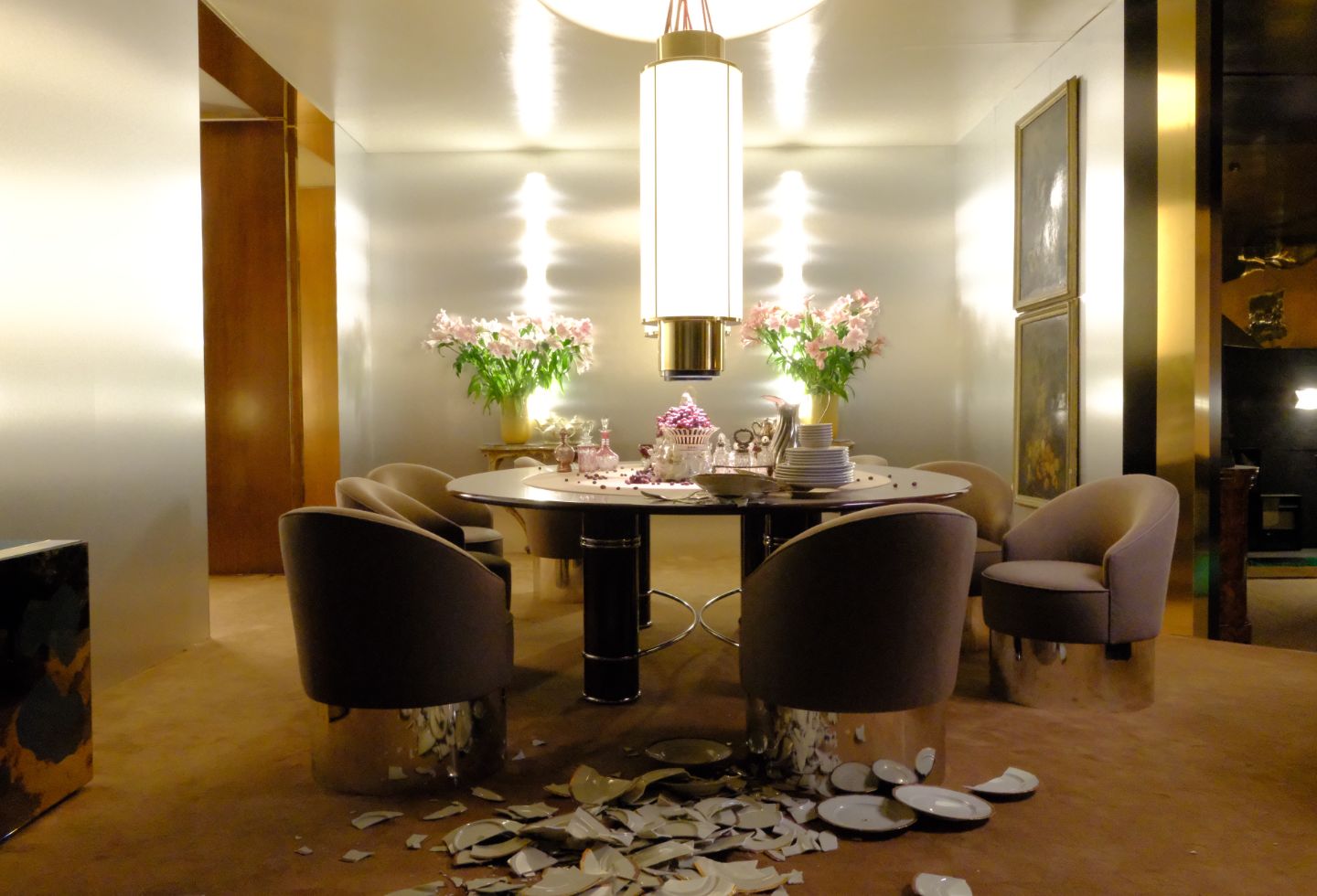
The result was furniture that felt like landscape, textured, sensory, and shaped by how we move, rest, and feel within it. It blurred boundaries: between indoors and out, home and escape, function and emotion.
More from Milan: An interview with Philippe Starck

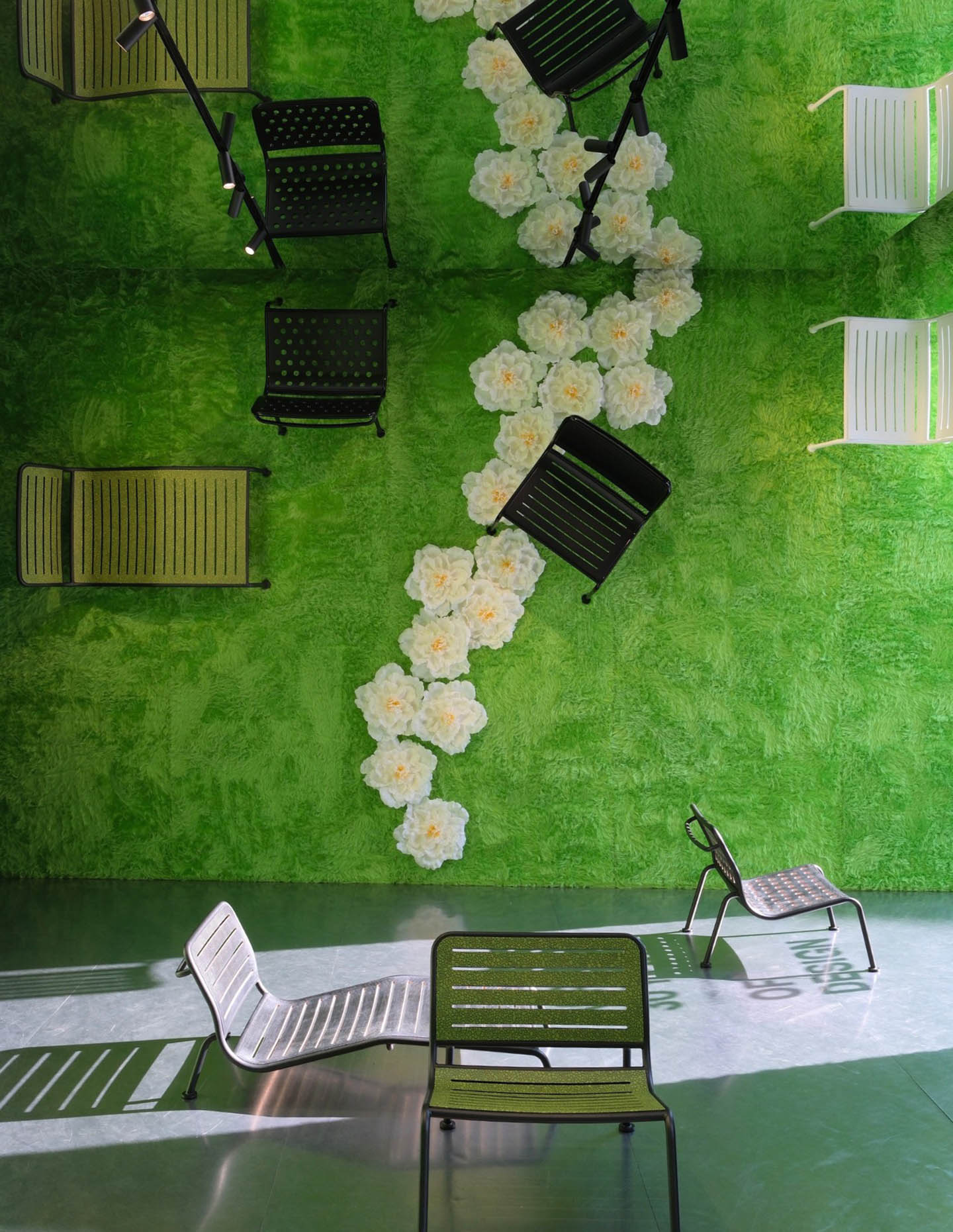
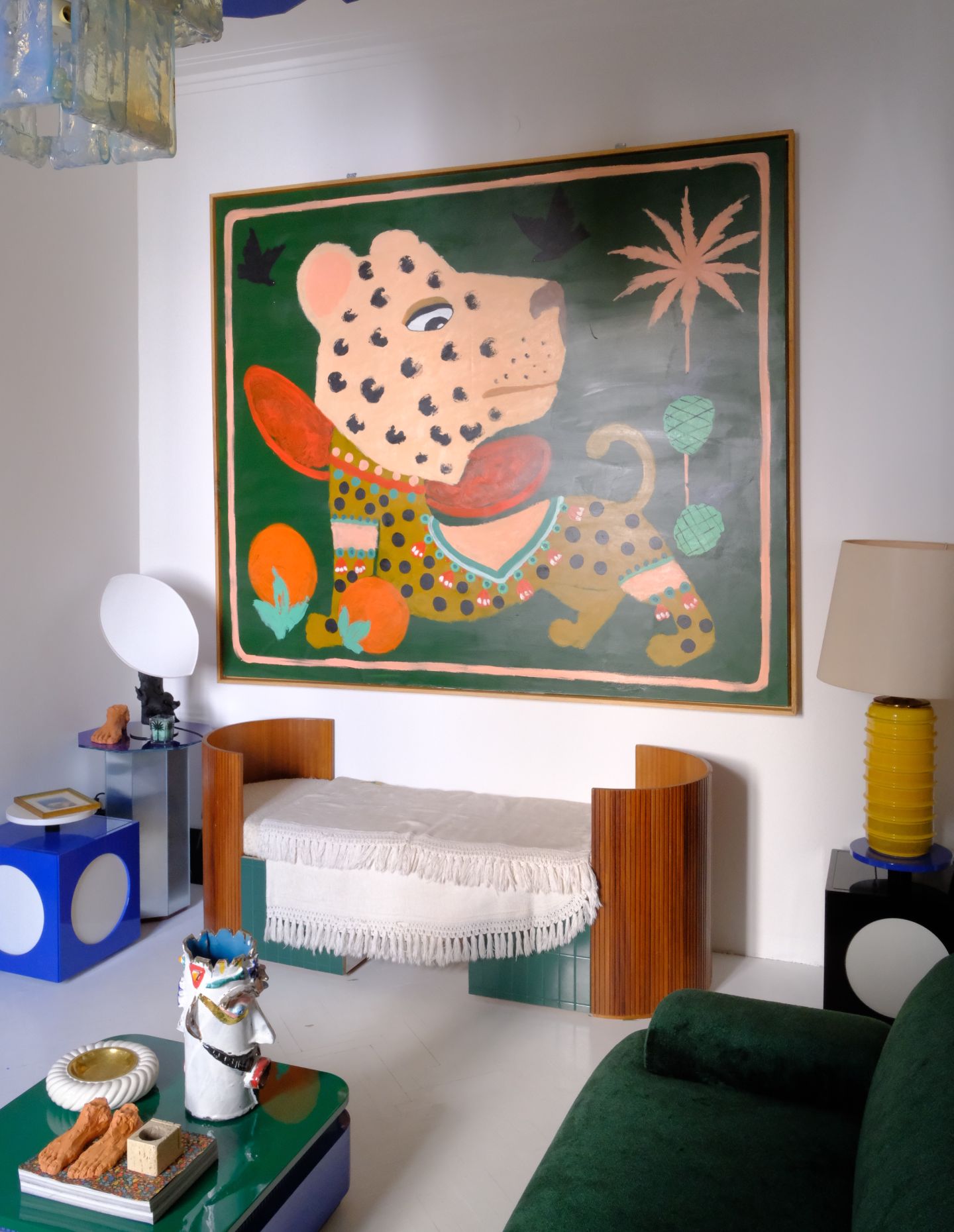
Certain moments stood out. Dimore Studio’s immersive installation, moving from darkness into light, felt like stepping inside a film. Acerbis presented with sculptural restraint: self-assured, never excessive. Tacchini reissued archive pieces with clarity, not nostalgia. And Dedar’s fabrics were perfectly pitched, lush, evocative, never overstated. Across the board, the strongest work wasn’t chasing trends. It was refining them.
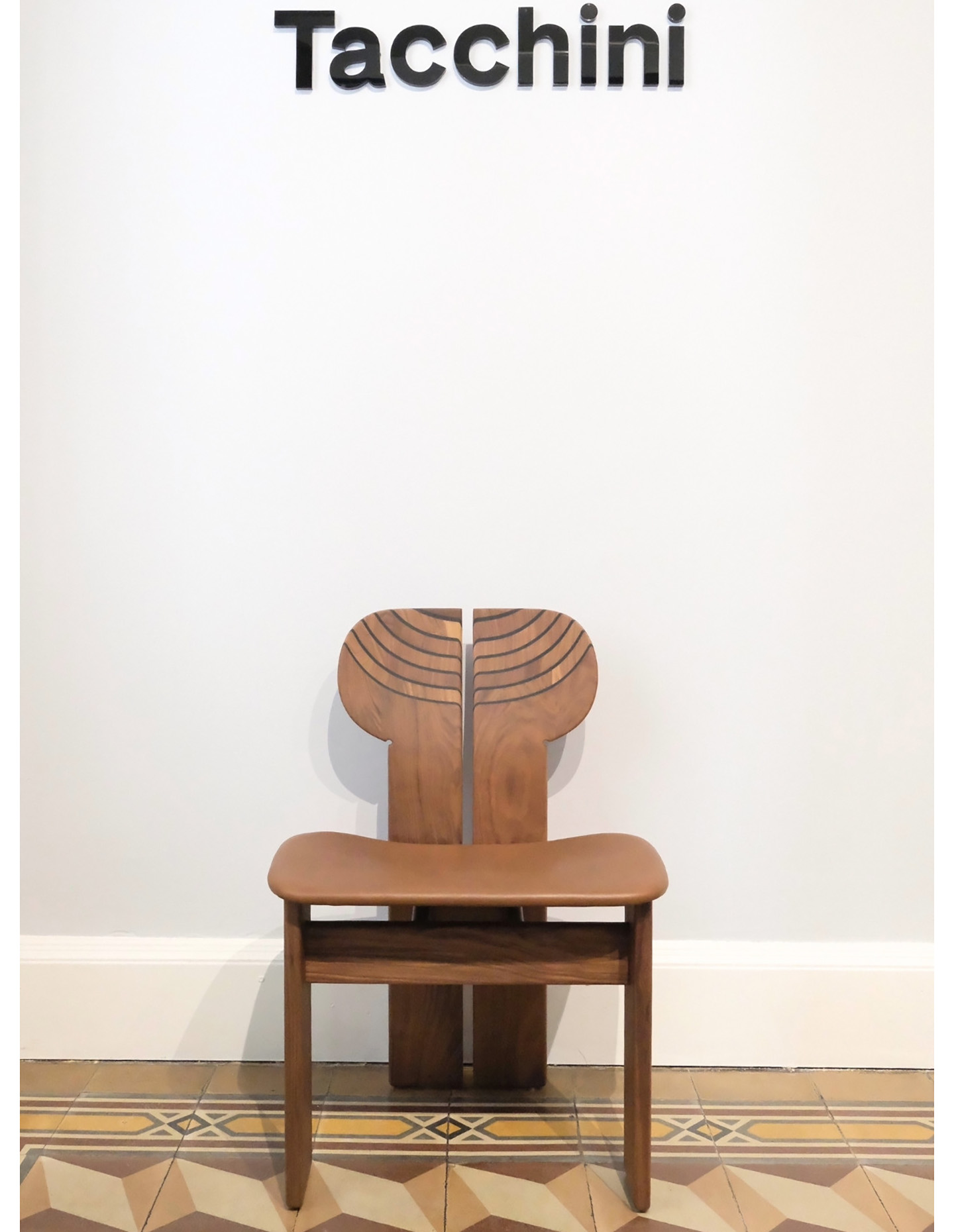

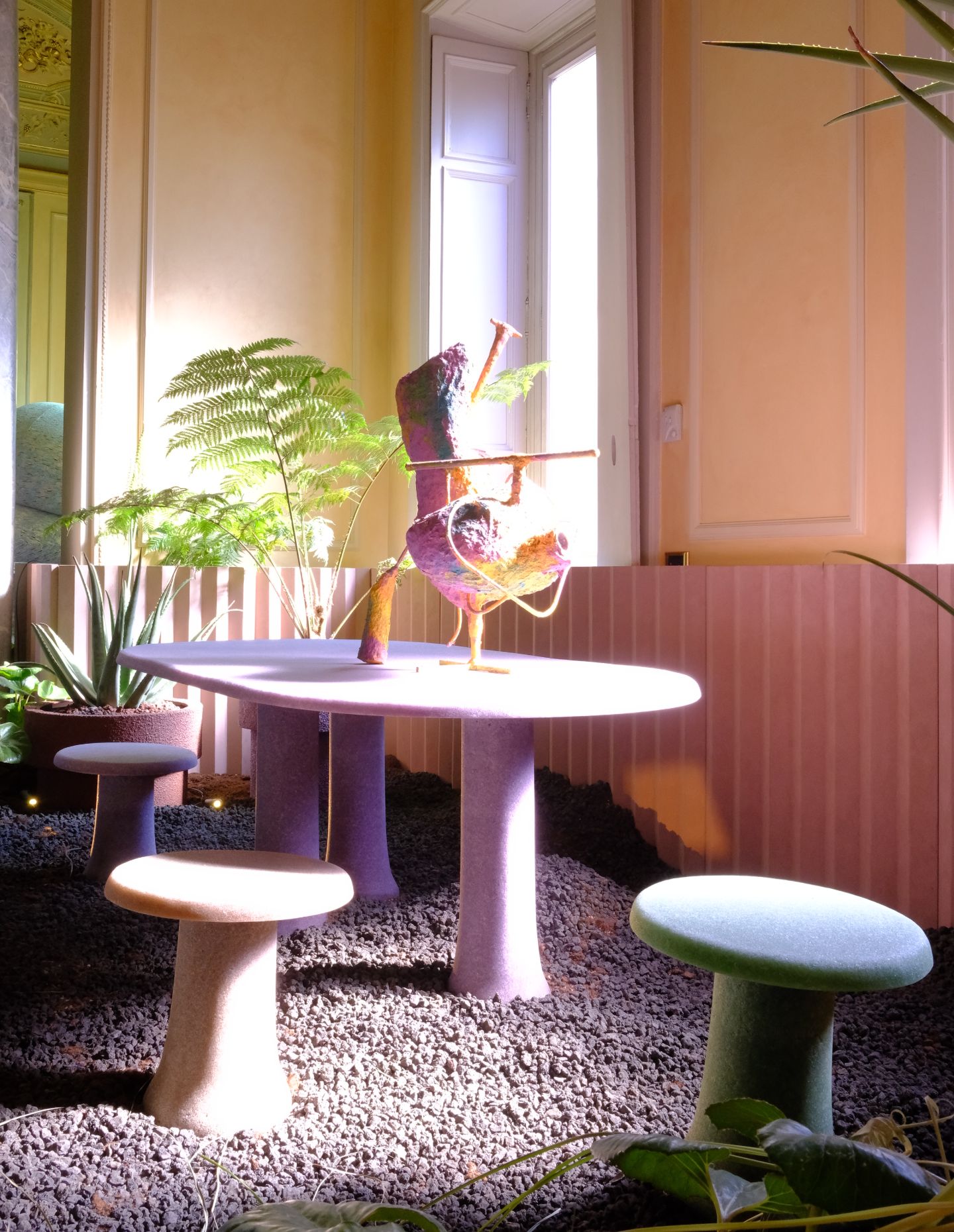
Milan isn’t just a design event; it’s a cultural recalibration. What lingers isn’t a headline launch, but a quiet gesture, a stairwell, a conversation, a moment of sunlight. I return to the studio more grounded, reminded that design is not performance, but presence. The work that resonates is always the work that holds people, slows them down, and makes them feel.
